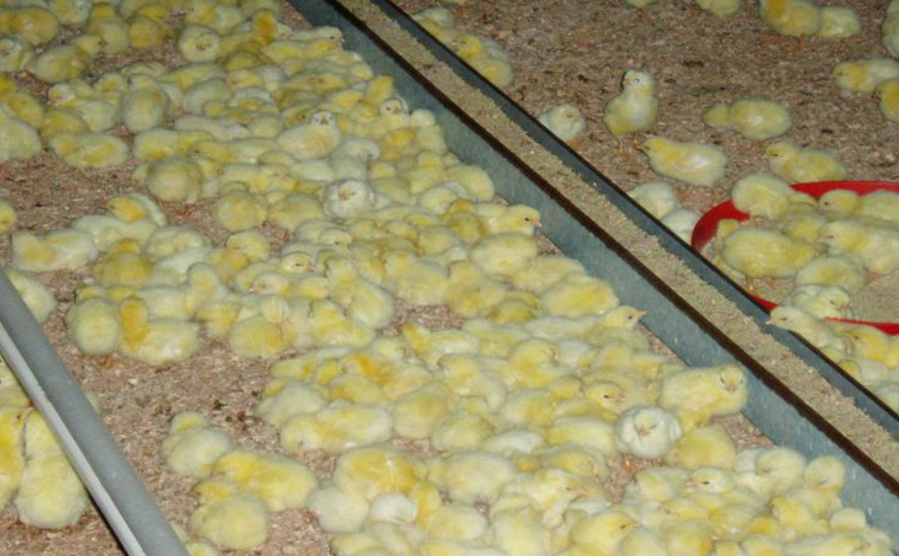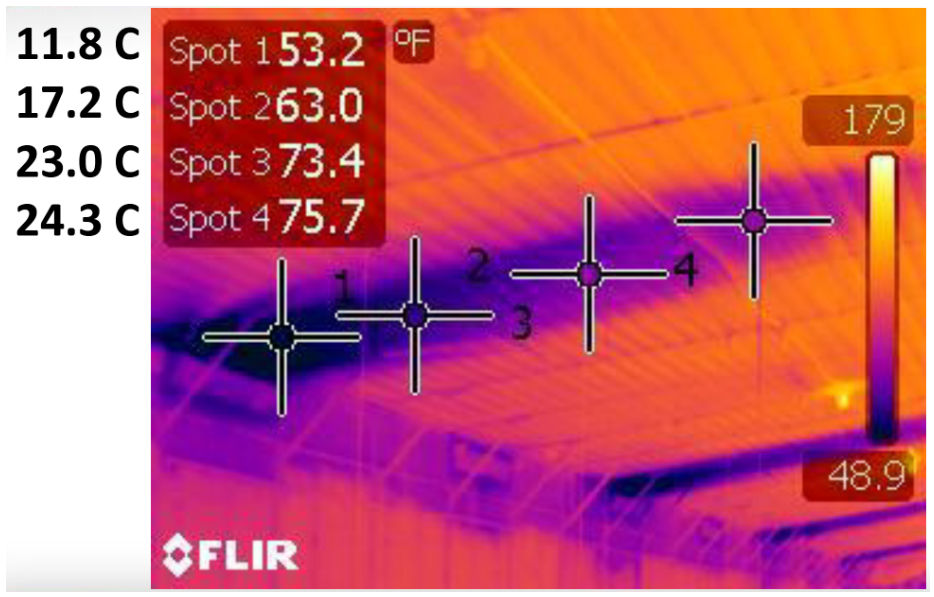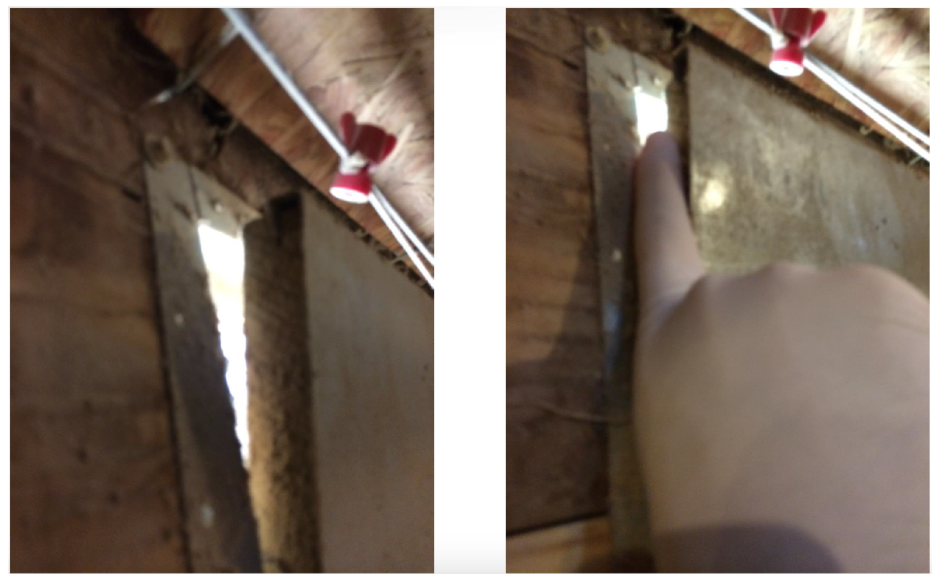



Three keys to achieving proper ventilation
Be on the lookout for these indicators throughout the year for any sign of poor ventilation so you can repair it immediately.By Chance Bryant, Director of U.S. Technical Services, Cobb.
(For more information, read our article, The Importance of Ventilation in Broiler Management.)
However, ventilation is not just something to be monitored in the summer months. Both cold and heat stress can negatively affect flock performance and once the damage has been done, there is no way to undo it.
The following is a list of indicators that can help you determine the efficiency of your ventilation system. Be on the lookout for these indicators throughout the year for any sign of poor ventilation so you can repair it immediately.
Air quality
Check your air quality using your sense of smell, sight, and feel:
- Smell: Does the air smell “sour” or smell of ammonia? If you smell ammonia coming off the litter, the chicks are being exposed to even higher levels of ammonia as they are closer to the ground and breathe it in more directly. A sour smell indicates excessive moisture levels. Note: Even if you don’t smell ammonia, it doesn’t necessarily mean you have good ventilation. Be sure to conduct other tests to make sure there aren’t any issues.
- Sight: Does the air look clear or hazy? If it looks hazy, ventilation could be an issue.
- Feel: Does the air feel thick or humid? If so, the Relative Humidity (RH%) is too high.

Bird behaviour
Observing how the birds are behaving is a great way to tell if they are uncomfortable. Look for signs of:
- Panting
- Reduced food intake
- Huddling together
- Crowding the walls
- Being very loud
Humidity levels
Birds let off a lot of moisture, so it is important to check that the humidity level in the chicken house is not too high.
In general, you want the relative humidity (RH) level to be no more than 65%. Increase ventilation if the RH goes any higher than this threshold.
If humidity is too high, it can negatively affect the well-being and growth of the birds. They will have reduced ability to remove BTUs (British Thermal Units) through the respiratory system.
Check for other signs of high humidity:
- Walls wet with condensation
- Wet, caked litter along the water/feed lines. This can cause foot pad lesions and respiratory issues due to the increased bacteria in the air.
CO? levels
It’s important to check CO? levels in addition to air quality and humidity levels as fresh bedding or litter amendments can make the air seem fine, when in reality the house is not properly ventilated. Signs of high CO? levels can be seen in bird behavior, such as:
- Reduced bird activity
- Huddling together as if cold (Note: Huddling together doesn’t always mean birds are cold. Excessive CO? levels can cause this huddling together.)
- Reduced food/water intake
- Lower 7 and 14 day body weights
The lack of ventilation, which contributes to high CO?, can result in reduced weight gain, greater incidence of right ventricle failure (ascites) and lower O? levels. In general, the maximum level of CO? in the air should be 3000 ppm.

If you find that your ventilation system is not working properly and thus prohibiting your flock to reach its genetic potential, follow these keys to achieving proper ventilation:
Ensure proper static pressure (SP)
Typically, the wider the building, the higher the SP needs to be as air needs to travel farther in wider houses.
Be sure to seal holes, cracks and air leaks with expanding spray foam or some other type of sealant. Poor air control or loose houses can result in drafts causing cool chicks and wet litter.
Controlling the incoming air or “air administration” is very important and will be influenced by SP. Incoming air should flow along the ceiling and mix with warm air at the peak of the building. This will allow time for the incoming air to warm up before it falls to the ground.#

Ensure proper minimum vent door opening
Vent doors will open and close 288 times a day on a 300-second fan cycle. This needs to be correct every time.
Ensure that the door is open enough for every fan cycle (wall mounted inlets need at least 1.5” to 2” of opening; ceiling mounted inlets need at least 1”).
Match the number of inlets with the proper cubic feet per minute to achieve the desired opening (good rule of thumb is approximately 15ft² of inlet per 10,000 CFM of fan capacity).

Implement the proper fan cycle run time to control air
- Know how to calculate the proper fan cycle run time for the age of your flock.
- Adjust the cycle run times for increased levels of ammonia, elevated relative humidity or excessive dust.
- Use company recommendations as a starting point or guide for proper ventilation cycle time.
If in doubt, follow these two rules of thumb:
- For every 20°F (11.1°C) air temperature increase, the relative humidity (RH) should be cut in half or the moisture holding capacity should be doubled. For example, 40°F (4.4°C) over 80% RH air is administered into the building properly through the inlets and flows along the ceiling. Once this air warms to 60°F (15.5°C), that air is now 40% RH.
- For every 0.01” of water column (~2.5 pascals) of static pressure (SP) air will travel approximately 2 feet (or ~61 centimeters). For example, if we operate with a pressure of 0.10” water column (25 pascals), air should travel about 20 feet (or 6.1 meters). This will help determine the proper static pressure for the building.
Conclusion
Lack of proper ventilation can have a devastating effect on your flock’s ability to reach their genetic potential. Even seemingly small changes in temperature or air flow can impact your flock’s performance. It can also have a major influence on the litter, creating lasting effects on the next flock as well. As such, it’s important to be vigilant and on the constant lookout for any indicators of poor ventilation.











